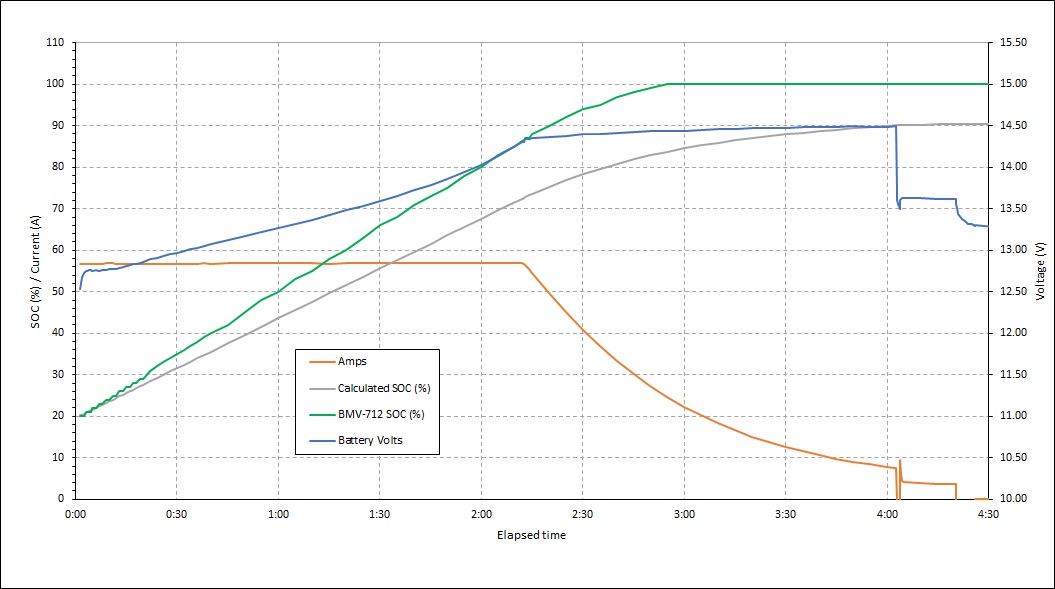I have been testing various converter setups to charge 2 6V AGM batteries connected in series. Total capacity is 225Ah, Peukert exponent = 1.12. I discharged the batteries to 20% state of charge, then connected the converter and monitored battery voltage, charge current and SOC as reported by the BMV-712. I also calculated the state of charge using the Coulomb counting method, assuming a charging efficiency of 95%. I would have expected my calculated SOC and the SOC reported by the BMV-712 to match, but they don't:
The BMV-712 SOC reads consistently high and reaches 100% while the converter is still in bulk charge mode. My calculated values seem much more reasonable and believable. Interestingly, if I set the charging efficiency in my calculations to 120% (crazy, I know) then my calculation of SOC matches the BMV-712 exactly.
Anyone any idea what is going on here?

